There are a surprising number of pieces written for toy piano. One of the most famous is John Cage’s Suite for Toy Piano (1948) but the instrument has a much longer history, dating back to the mid-19th century. As pianos became the signal of the middle class, pianos for children became the extension. Some pianos are realistic, with correct white and black keys, others only have the black keys painted on, and others simply have alternating black and white keys – but without the implied microtonal shadings that put a key in the half step between E and F or B and C might imply.
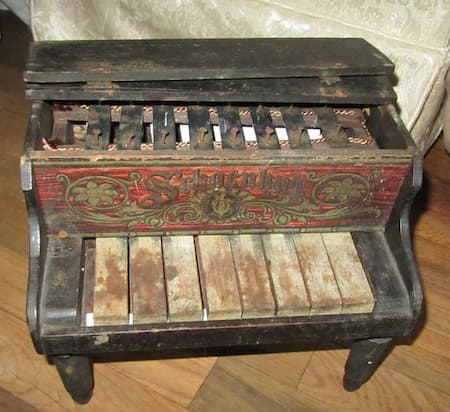
19th century toy piano with painted black keys, c 1879-1899, Schoenbut
Toy pianos do not have strings, like ‘real’ pianos, but have metal bars that are fixed at one end. Originally, the sounding bars were made of glass, but this proved to be too fragile, and the toy maker (and toy piano repairer) Albert Schoenhut (1848-1912) changed these to metal. He started the Schoenhut piano line in the US in 1872 and it still continues today.
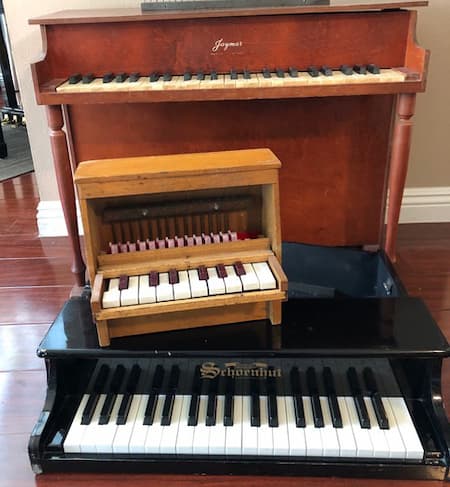
Different toy piano sizes
Toy pianos came in many sizes: from small one-octave to 18-key to 25-key to 37-key models. Although most were in the form of upright pianos, toy grand pianos exist.
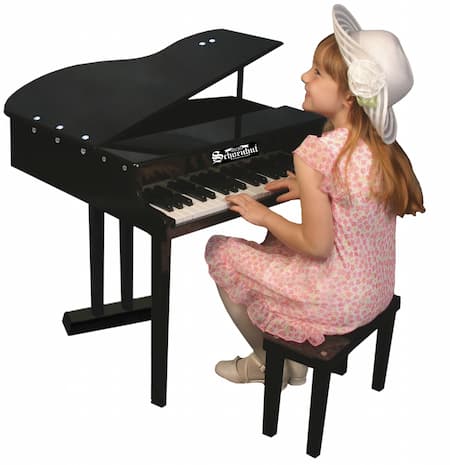
Toy grand piano (Schoenhut 37-key Concert Grand)
Tuning on the toy piano is a bit ‘approximate’ – they go out of tune quickly even when they start out tuned. They never sound like a real piano because they don’t use strings but are sounded with little hammers striking steel rods.
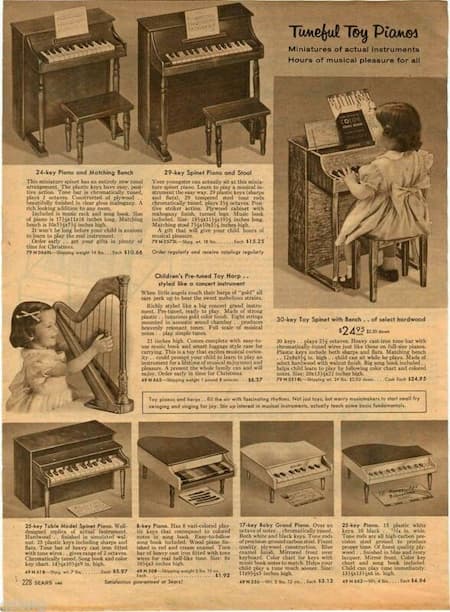
Catalogue page with toy pianos and music
This dichotomy in sound was used by American composer Toby Twining in creating his ‘parody of the romantic concerto’ entitled An American in Buenos Aires. This blues tango is a slow walk through the musical styles of tango, blues and symphonic, with each instrument, toy piano and piano having their own voices.
Toby Twining: An American in Buenos Aires (A Blues Tango) (Margaret Leng Tan, toy piano and piano)
When the work is arranged for a smaller piano, hear Jeanne Golan’s 18-key Schoenhut, you can appreciate the quality of the 37-key piano played by Margaret Leng Tan.
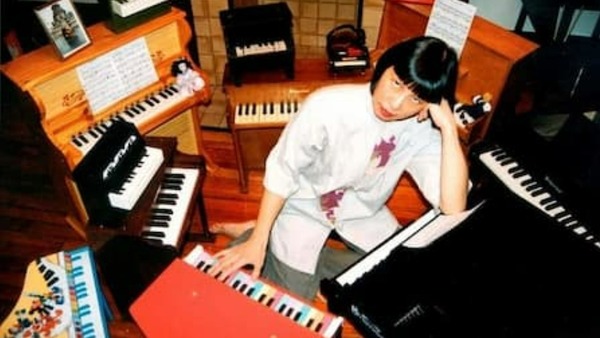
Margaret Leng Tan with toy pianos of all sizes
Toby Twining: An American in Buenos Aires (arr. J. Golan for toy piano and piano) (Jeanne Golan, toy piano and piano)
After Cage in the mid–20th century, other composers started to write for the toy piano, such as Toby Twining (above). Phyllis Chen wrote her piece Hush for toy piano and prepared the piano, using parts of a broken music box (wheels, screws and bolts) to prepare the piano and make it sound like a toy piano. The end effect is almost like a gamelan.
Phyllis Chen: Hush (Phyllis Chen, toy piano and piano; Cory Smythe, piano)
One of the most famous toy piano players in popular culture was Schroeder from the cartoon Peanuts. He could make a toy piano sound like a real one…thanks to the music by Beethoven he was invariably performing.
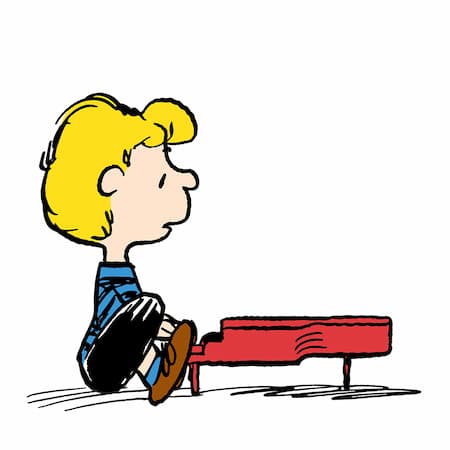
Charles Schulz: Schroeder
In honour of Schroeder’s love for Beethoven, the Ira S. Brilliant Beethoven Center assembled all of cartoonist Charles M. Schulz’ Peanuts cartoons for an online exhibition entitled Schulz’s Beethoven: Schroeder’s Muse. The section on ‘Musicology Moments’ covers all the times where Schulz’ use of Beethoven was tied to the scene in the comic, noting in one case:
‘One of Schulz’s great inspirations was to show the passage of time by using music from different spots in a single movement or from using music from two different movements. In a Sunday strip published on February 24, 1963, for instance, Lucy is listening to Schroeder play the first movement of the Sonata in F Minor, Opus 2, no. 1, in the first panel (mm. 119-20). In the second or third panels, Schroeder has advanced to the second movement (mm. 3-5). The music from the first movement is about one minute from the end of the 7 1/2 minute piece. The music from the second panel starts at 10 seconds into the movement.’
The co-curator, William Meredith, also noted that Schroeder, at age 8, could play 11 of Beethoven’s 32 piano sonatas!
For more of the best in classical music, sign up to our E-Newsletter



